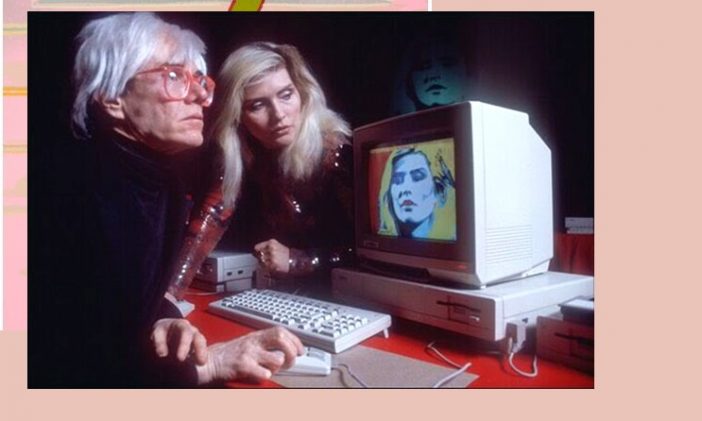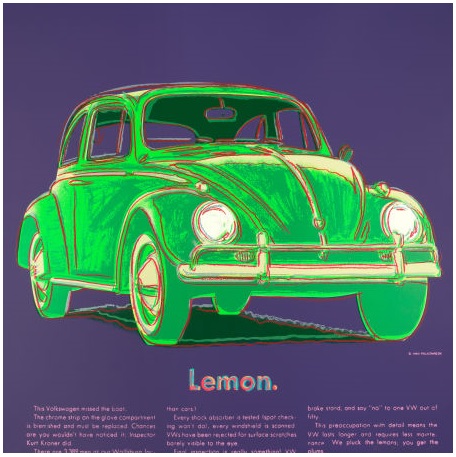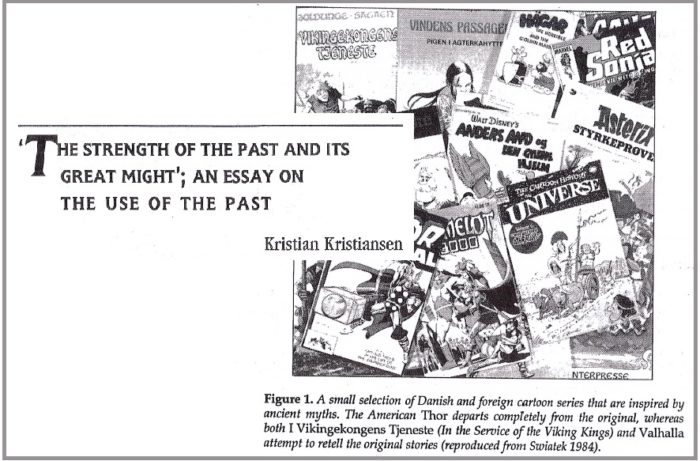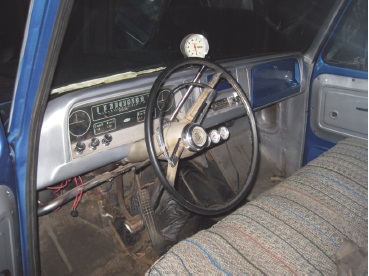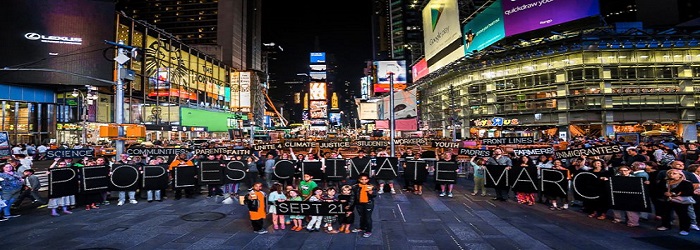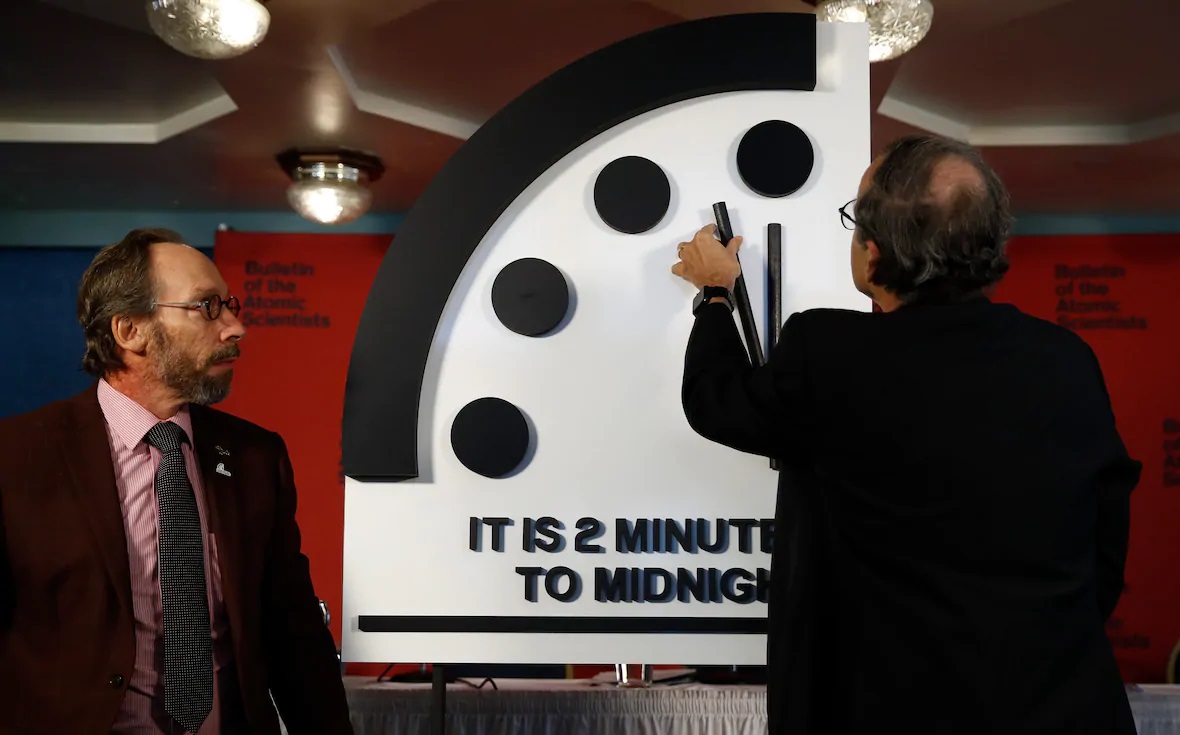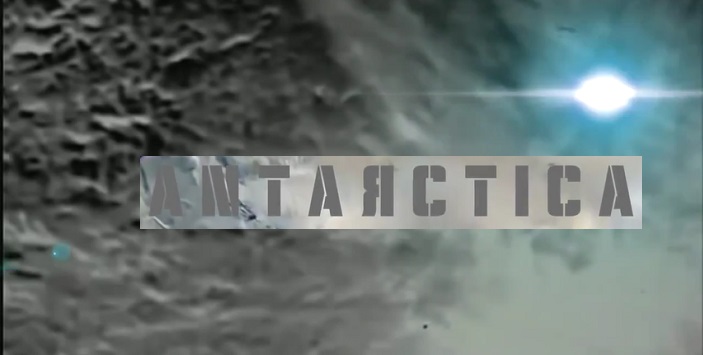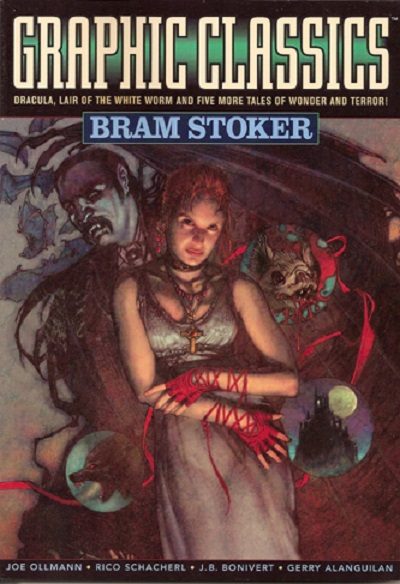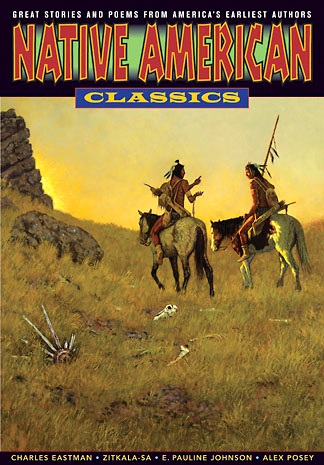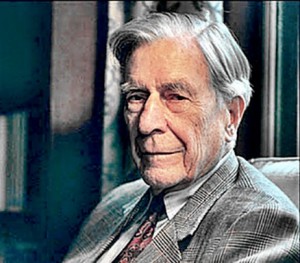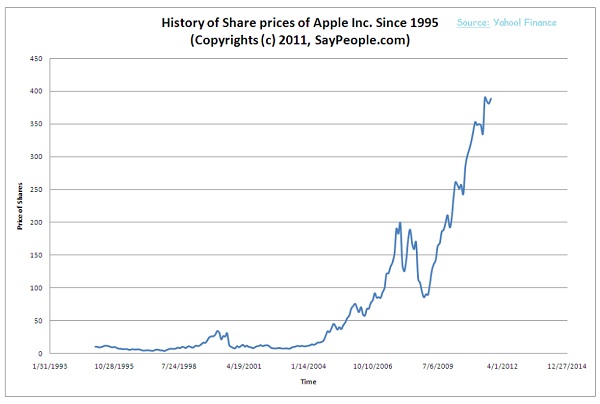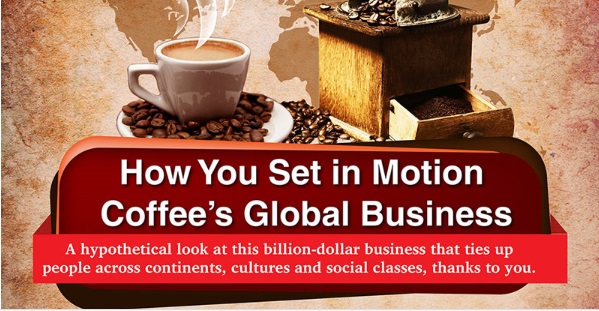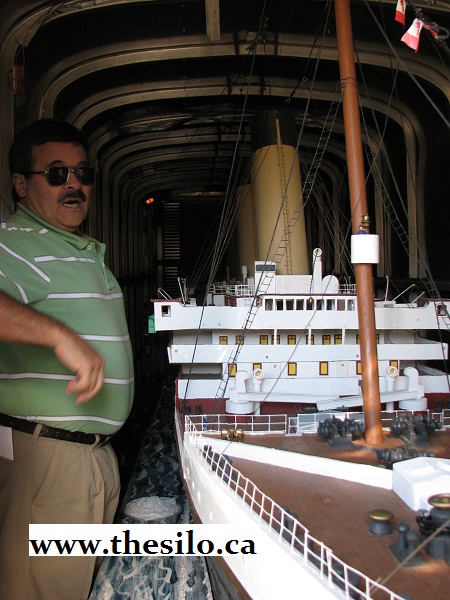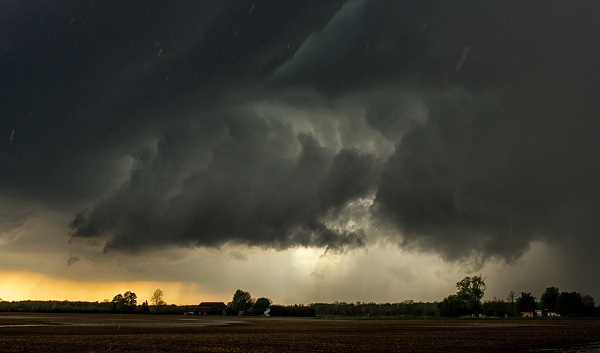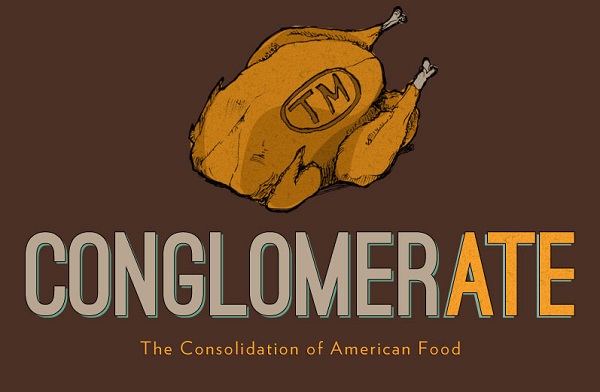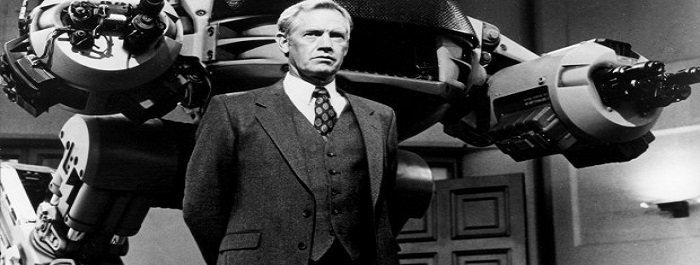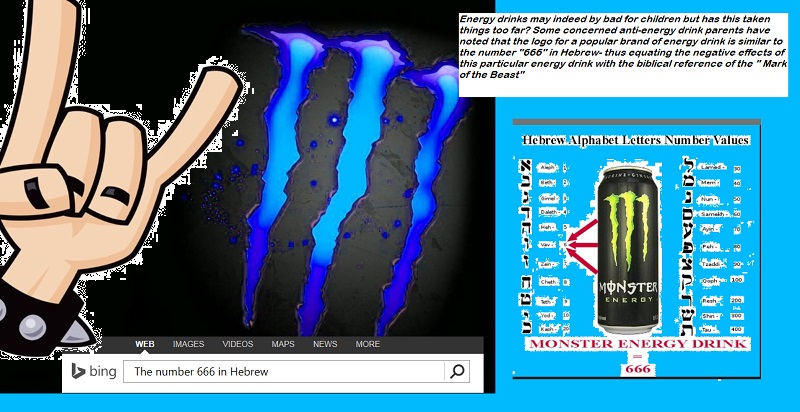Courtesy of our friends at http://www.watches2u.com/hub/how-to-spot-a-fake-apple-watch.html
Tag Archives: the silo
Ten years ago- Batman Arkham City released
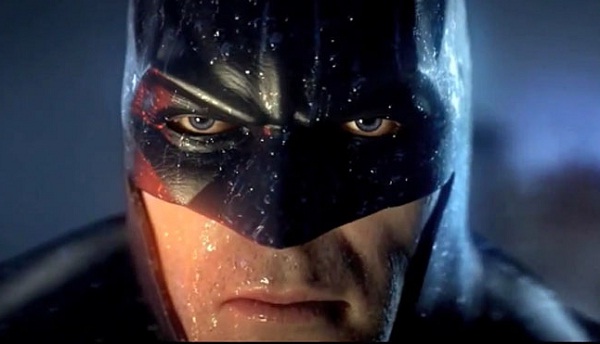
Batman: Arkham City Review – Rated T (for Xbox and Play Station)
Welcome ! I am going to begin this review with a confession: I am a retro gaming fan and somehow have missed out on a number of wonderfully aging titles. In fact, I had never played Batman: Arkham Asylum. It’s not that I was never interested, in fact quite the opposite, but our paths just never seemed to cross. Before beginning Batman: Arkham City I figured it was best to equip myself with some knowledge of its precursor. With an effortless search of Google I quickly found myself lowering my head in shame for all that I had missed out on. Nevertheless, I managed to convince myself that this was an opportunity to go against the grain, travel the road less traveled and yes, play out of sequence!
And so begins the adventure and the review. . .
After reading the necessary details and other reviews for Batman: Arkham Asylum I had a pretty good hunch that it’s follow up, Batman: Arkham City would be nothing short of fantastic. This game is a true indication of how far video games and their technology have come and the possibilities that still remain. Now, I could dive in to the guts of the game and discuss graphics, weaponry and overall gameplay but that would be jumping on the band wagon (which I’ve already determined is not my game plan). Instead, I feel there is something else that stands out above all other criteria: the theme of filth and decay. Darkness and death consumes Arkham City, its people and even Batman himself.
From the game’s beginning we are placed in a world that is full of shadows, crime in every dark corner, filth and grime smeared on every surface yet somewhere, within this dismal world, an intricate story unfolds.
A section of Gotham city has been walled off and is home to some of the city’s worst criminals and madmen, each of whom are fighting for power and fighting each other for it. With only a few far fetches Batman: Arkham City represents a world not unlike our own.
Take Hamilton, Ontario, Canada, for example.
It has its own areas of the city that are run down, considered ‘ghetto’ and known for acts of crime. Imagine if the mayor decided to build a wall around these areas and seclude them. The people within those walls are now left to fend for themselves – finding their own food, shelter, warmth and safety. It is only a matter of time before those communities begin to deteriorate more and more in to a state of delusional chaos. Stores shut down and become abandoned, buildings are neglected and covered in graffiti, and even the weeds are breathing new life now that there is no city maintenance.
If you can imagine such a scenario and the feeling that one might experience living in such a place, then you now know what playing Batman: Arkham City is like. I think that’s part of the reason why I enjoyed this game so much. Unlike almost every other video game, I could actually see Arkham city as a feasible scenario within our own world, hell, our own city! Furthermore, this allowed me to really sink my gaming fingers into Batman’s character and get a feel for what it might be like to be the cape crusader of Steel Town.
Some of the greatest things about Batman are his gizmos and gadgets which I used religiously throughout the game.
Soaring high above the city and the smog I could see crimes happening and swoop in on un-expecting villains and their goons. Whether I was using my trusty zip line to quietly whiz from point A to point B or using the cover of darkness to conceal my presence, I was using my surroundings, my city – my home. Or perhaps I should say what was my city and what used to be my home. Like the city of Arkham, Batman too deteriorates as the game goes on. His suit and cape become more battered and torn the more fights he’s in and the more evil he defeats. Once again I can only draw on the parallels of our own local cities and communities. Living within the confines of a dying city is a great recipe self-deterioration both physically and mentally.
When it comes to villains, enemies and ‘bad guys’, Batman: Arkham City I applaud you.
I was happy to see appearances by the Joker, Penguin and even the Mad Hatter! However, these guys are not quite how I remember them to be from the cartoons as a kid. No, no – these ugly, vile villains are far more disturbing. Each character that we encounter looks as though they are decaying in some way, shape or form. Some have cuts and scars all over their bodies, while others are losing their minds with insanity. Some just visually look broken down, worn out and even dead (much like the city they are trying to run). Each character has their own story to tell adding to your understanding of the plot and overall game.
Now, if we take a minute, once again this is not unlike the people within our own communities. Okay, we may not have a Riddler running around town leaving giant green question marks on things or gigantic science experiments who can shoot lightning bolts at us but every person has their own background and a story. All these details help explain why they are the way they are and why they live their lives the way they do. For all we know, there are Jokers and Penguins living amongst us, walking our streets and plotting their victories. Scary thought.
Another great addition to the game is the inclusion of Cat Woman and Robin characters.
Each character has their own missions and side tasks to complete apart from Batman. The world still stays the same but the stories become completely different. For example, if you are playing as Cat Woman the side missions that the Riddler has littered all over Arkham are different yet unique to your character in comparison to the tasks given to Batman. Inevitably, you are playing an entirely different game depending on the character you choose. The upside to this is being able to play as a character that you yourself might have a better connection with. Personally, I loved playing as Batman but Cat Woman did connect with my female side and added a certain finesse to my gameplay.

So, I find myself with yet another finished game to add to the shelf however, there still remains a vacant slot for which to place the predecessor of this game. Playing out sequence and blazing my own trail did not seem to hinder how I played Batman: Arkham City, in fact I was able to grab the concept of Batman: Arkham Asylum quite well with help from various hints and stories provided by characters throughout the game.
Not every video game you partake in has the ability to draw you in and allow you to become immersed in its world. Batman: Arkham City however, does just this. Every aspect within this game from the setting, the characters and the missions themselves all have incredible attention to detail, making its world more realistic.
Don’t get me wrong, I love burrowing into the world of fantasy every once and a while. I love being taken into a world where there is no comparison to the world outside my window and furthermore, fantasy worlds require you to play with a different type of gameplay and mindset. But then again, those games don’t necessarily evoke the same response or feelings that a gamer might experience while playing a game that’s hits a little closer to home. The realistic components to Batman: Arkham City is what did it for me. The frightening parallels, the visuals and the overall story within this game gave me goose bumps.
If there are two pieces of advice I can give to my fellow retro gamers it is this: I encourage you to do as I did and every once in a while throw caution to the wind. Play to the tune of your own gamer heart and don’t be afraid to start in act three in a five act play. Also, don’t hesitate to drench yourself in all that an old video game has to offer. Take your time, smell the fumes of sewer smog and embrace the dark shadows that lurk in every corner. After all, you’re Batman – you laugh in the face of danger.
For the Silo, Holly LaRue.
Angels In Starships? There’s Lights All Over The World

A thousand UFOs are reported each month and are usually seen with lights or as bright orbs. They often appear to be signaling their presence. I have been told by high ranking personnel that UFOs definitely have a religious aspect involved in their presence. Most are friendly but some have their own agenda. The Ten Commandments has instructions for mankind to abide by rules or laws that mankind should use when they travel in space such as do not kill and steal.
The Bible frequently mentions lights.
“You are the light of the world. Let your light shine before men, that they may see your good deeds and praise your Father in heaven.” Matthew. 5:14-16: The Bible promises life after death. Are these ships here to pick up human souls as they die? People’s bodies are known to lose less than an ounce at death.
“A fourteenth century fresco of the Madonna and Child by St Giovannino, in the Palazzo Vecchio in Florence, attributed to the 15 Century school of Filippo Lippi. A UFO hovers in the distance. A blow up of this fresco reveals details of the UFO including port holes. It seems to indicate a religious involvement between UFO’s and the appearance of the Christ Child. ” from disclose.tv
Ralph Waldo Emerson wrote, “The soul comes from without into the human body, as into a temporary abode, and it goes out of it anew … it passes into other habitations, for the soul is immortal.”
Angels in Starships
There are thousands of books about angels and first hand contacts with humans. The book “Angels in Starships” tells of Angels or aliens in Italy. The book states, “And now the facts: Giorgio, Tina, Paolo, and other friends have a number of ‘eye-to-eye’ contacts with space brothers, with rides in starships, and with conversations, in which it is revealed to them that they are the so-called ‘angels’ of the Bible, or mediators and messengers of those who served God’s will, and still serve, to reveal the truth to men of Earth, and to guide them on the path toward higher development. During the encounter their car received tremendous heat and the engine was severely damaged.
In the course of such meetings, the group received important revelations and messages of utmost seriousness, which concern all the inhabitants of this afflicted planet. The invitation to follow paths to a better way of life is well advised, for the time of great catastrophes and dreadful happenings about which the Apocalypse speaks is coming nearer; the day in which “one will be taken away and the other left behind.”
On the occasion of one of these unusual meetings, the Earthly friends, who had been entrusted with messages and teachings, and had been guests on the flying saucers and the starships, were allowed to have the wonderful experience of visiting a distant planet.
A few examples of UFO encounters : In Indian Sanskrit, space vehicles are generally called ‘Vimanas.’ Cicero, in the 43rd chapter of his “De Divinatione”, writes of ‘balls in the heavens’; Julius Obsequens, in “Prodigia”, writes of ‘flaming shields’, and these descriptions occur likewise in Aschylos, Plutarch, Seneca, and Valerius Maximus. and Xenophon. Dio Cassius related that, at the first landing of the Romans in Great Britain under Aulus Plautus in the year 43 B. C., a round object flew like lightning from east to west. Roman soldiers had UFO like objects on their shields.
‘Dark globes’ were seen over Basel in the Middle Ages, and similarly, there were ‘airships’ in the skies of the United States toward the end of the 19th century. During World War II, ‘balls of light’ and so-called ‘foo-fighters’ followed both the Allied and the German aircraft. For the Silo, George Filer. Search “Filers Files” for more about UFO’s
Supplemental: Kniha angels in starships
.
Canadians aware country is #1 in extreme, unfair mobile rates

My name is Ann Murray (not that Ann Murray), and I’m a publicist for RingCredible, the next practical, affordable, secure and reliable solution in mobile VoIP calling. I’m writing to explain how consumers can spend as little as possible on mobile calling charges each month – and quickly hack their household mobile calls spending.
This topic is especially timely, given how Canada’s mobile rate calling rates are one of the world’s worst – and also given the recent acquisition of Mobilicity by Telus. [see link below CP]
Why the hefty price? This is the fault of “The Pricey Three” – Bell, Rogers, and Telus – that lock customers into very expensive calling plans. If you’re in one of the Pricey Three’s plans, you are more likely to run out of call credits, you will have less minutes included, and the price of additional minutes will be more expensive than the rates of your friends and family around the world.
The solution is RingCredible’s “How to hack your mobile phone bill,” which include the following tips:
5. Use calling cards, which is a very cheap way to make calls (just not very convenient)
4. Try the smaller mobile calling alternatives owned by Bells, Rogers or Telus
3. Go with free peer-to-peer calls using Viber
2. Sign up for Wind and Mobilicity, which sell all-inclusive packages (Mobilicity was recently acquired by Telus)
1. Sign up for a VoIP provider such as Skype [Skype The Silo: thesiloteam CP], Fongo, or VoipGo
Our solution, RingCredible (App’s available at www.ringcredible.com) is a great, and nearly free calling choice, with the added benefit of offering the same user experience as when making a normal mobile call.
Some other interesting results to consider include:
* What the acquisition of Mobilicity by Telus means to the consumer http://mobilesyrup.com/2013/05/28/one-step-closer-ontario-superior-court-of-justice-approves-telus-acquisition-of-mobilicity/
* How to save when you’re out of the country and calling back home
* How other countries have hacked their own mobile calling rates

For the Silo, Ann Murray.
Warhol, Lichtenstein Art Auction look back
Almost one decade ago: Andy Warhol’s “Endangered Species and Ads” prints bring a combined $677,000 USD alone at this notable Modern and Contemporary Art event.
Two complete portfolios by Andy Warhol, Endangered Species, 1983 and Ads, 1985, sold for $338,500 USD each to far exceed their estimates among a field of fresh-to-market iconic works during Heritage Auctions’ $2.9 million USD Modern and Contemporary Art Signature® Auction, May 22 in Dallas.
The auction sold 90% by value and 78% by lot.
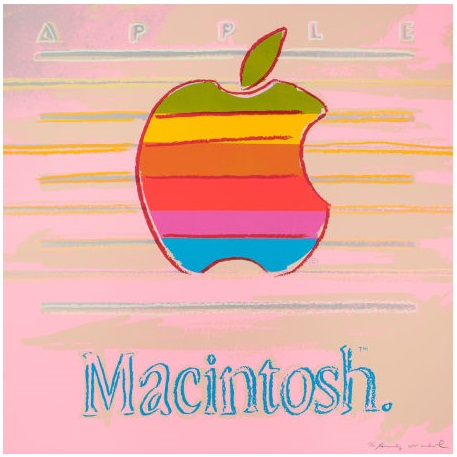
Ads, 1985
Portfolio of ten screenprints on Lenox Museum Board
38 x 38 inches (96.5 x 96.5 cm)
Ed. 50/190
Each signed and numbered in pencil
Printed by Rupert Jasen Smith, New York
Published by Ronald Feldman Fine Arts, Inc., New York
PROVENANCE:
Private collection, Texas
LITERATURE:
Feldman & Schellmann, II.350-359
Warhol, Andy:. American painter, photographer, filmaker and publisher, 1928-1987
ANDY WARHOL (American, 1928-1987)
Ads, 1985
Portfolio of ten screenprints on Lenox Museum Board
38 x 38 inches (96.5 x 96.5 cm)
Ed. 50/190
Each signed and numbered in pencil
Printed by Rupert Jasen Smith, New York
Published by Ronald Feldman Fine Arts, Inc., New York
PROVENANCE:
Private collection, Texas
LITERATURE:
Feldman & Schellmann, II.350-359
Warhol, Andy: American painter, photographer, filmaker and publisher, 1928-1987
Condition Report*:
With original Ronald Feldman Fine Arts, Inc. cardboard portfolio box and index print. All screenprints unframed and in good condition with specifics listed below. Mobil: Minor rubbing 3/8″ in due to former frame. A few incidental surface scratches and rubs. One 5/8″ abrasion, resulting in very minor loss. Paramount: Minor rubbing 3/8′ to 1/2″ due to former frame. Very minor bumping to bottom right corner. Chanel: 1/2″ to 1″ light rubbing due to former frame. Slate purple backgrund has hazy toning, beginning about 1/4″ in. Apple: Very minor incidental rubbing to edge. Rebel Without A Cause (James Dean); Van Heusen (Ronald Reagan); Blackglama (Judy Garland): All have only very minor edgewear. Volkswagen; Life Savers: Very minor surface rubbing and edgewear. Donald Duck: Very minor edgewear. Top corners have minor wear. Light handling creases. Some wrinkling and an indentation at end of signature. Left side center shows some moderate wrinkling and creases with some minor loss, beginning at 11″ from the bottom up to 24″, and affecting 3″ into the work. The face and body of Donald Duck is affected somewhat, as well as the background near edge. Light wear in top left corner and a small abrasion on middle right side. Unframed
Two works by Ed Ruscha responded well among buyers as his gunpowder on paper titled Rustic Pines, 1967, realized $290,500 USD and a color screenprint, Double Standard, 1969, sold for $182,500 USD , setting a record for the work. Mel Ramos’ Georgia Peach, 1964, fresh from a Texas collection, sold for $158,500 USD.
“The market for good contemporary art doesn’t seem to have hit any ceiling,” said Frank Hettig, Director of Modern and Contemporary Art at Heritage. “Our focus is presenting fantastic, fresh-to-market discoveries and bidders certainly responded in kind. It gives us high expectations for our November 2 Modern and Contemporary auction in Dallas.”
Among the modern masterpieces in the auction, the magnificent, 7-foot Cobalt Chandelier, 2003, by Dale Chihuly reached $158,500 USD. It is the largest Chihuly chandelier to appear on the secondary market and was offered through a federal court-appointed receivership overseeing the sale of assets previously owned by R. Allen Stanford of Stanford Financial Group.

Roy Lichtenstein’s Forms in Space, 1985, a screenprint published by the artist for the Institute of Contemporary Art’s Rally round the Flag benefit, achieved $53,125 USD and Georges Rouault’s Chemineau, 1937, realized $40,625 USD.

Sculptural art performed well as Étienne Hajdu’s La Mer, 1964, sold for $35,000 USD and Pablo Picasso’s Vase deux anses hautes, 1953, sold for $30,000 USD while Robert Graham’s Frieze Figure I-G, 1989/1990, brought $21,250 USD.
So what is that Volkswagen Warhol worth today in 2021? It’s hard to pen the value but in Spring 2019 one single print ad brought 30,000 UK Pounds ( 52,000 $ CAD) in a Christie’s auction.
ROY LICHTENSTEIN (American, 1923-1997)
Forms in Space, 1985
Screenprint in colors on Rives BFK paper
31 x 47-1/2 inches (78.7 x 120.7 cm)
Ed. 35/125
Signed, dated and numbered in pencil
LITERATURE:
Corlett, 217
NOTE:
Published by the artist for the Institute of Contemporary Art, University of Pennsylvania, Philadelphia.
Forms in Space has been created especially in honor of ICA’s benefit, Rally round the Flag (label on frame verso) .
Lichtenstein, Roy:. American painter, printmaker; born 1923 in New York City, died 1997 in New York City
Condition Report*:
Sheet: 35.75 x 51.5 A crease in upper center at extreme sheet edge; small pressure mark at lower right corner; lower right corner lightly bumped; paper lightly undulates; framed. Framed Dimensions 36.25 X 52.5 Inches
Supplemental- Apple logo designer dishes on history http://www.macworld.com/article/1142322/logo_design.html
The Strength Of The Past And Its Great Might
Within the last generation, archaeology has undergone a major transformation, developing from an independent small-scale activity, based upon museums and a few university departments, into a large-scale state organization based upon national legislation.

This has entailed an increase in resources on an unprecedented scale, and has drastically changed the profile of archaeology, which is now firmly fixed within the political and national domains. Moreover, decision making within the discipline has shifted from museums and university departments towards various new national agencies for the conservation and protection of the cultural heritage.
The consequences of this development for the discipline as a whole had remained largely unnoticed until …..click here to read the complete electronic essay by Kristian Kristiansen University of Gothenburg.
Also available via our friends at academia.edu
Celebrity Homes: Andy Warhol Home Sold For $50 Million USD
 Montauk, New York was celebrating its biggest estate sale ever after the closing on the 5.7-acre beachfront estate at $50 million USD that pop artist Andy Warhol bought in 1972 for $225,000 USD.
Montauk, New York was celebrating its biggest estate sale ever after the closing on the 5.7-acre beachfront estate at $50 million USD that pop artist Andy Warhol bought in 1972 for $225,000 USD.
The most recent owner of the compound was CEO of J. Crew, Mickey Drexler, who bought it in 2007 for $27 million USD. He listed it in 2015 for $85 millionUSD that included a 24-acre horse farm and equine center, which the buyer, Adam Lindemann, opted out of the purchase. Lindemann is the founder of the Venus Over Manhattan Gallery and a major collector of Warhol’s works making the property’s history especially significant for him.
Warhol’s first gig out of art school was as a fashion illustrator for several of the top women’s magazines. With the money acquired from his illustrations, he purchased a large loft on New York’s West Side and opened the Factory, where he turned toward creating industrial art. It wasn’t long before the Factory and Andy were attracting like-minded modernists from hippies to wannabe journalists and actors to drag queens and drug addicts. It was the start of New York’s avant-garde scene where Warhol held court. In addition to his painting, he branched out into music, film and journalism where he met Paul Morrissey who became the director of some of Warhol’s early films.
In 1972 when Warhol’s popularity and success were peaking, he and Morrissey decided to invest in property in the Hamptons and purchased the family fishing camp of the Church family of Arm & Hammer Baking Soda fame. The estate includes a 3,800-square-foot main house and five cottages completely hidden from public view with wide beaches and ocean views. Totaling almost 15,000 square feet with nine bedrooms and twelve baths, Drexler had it all meticulously restored by architect Thierry Despont.
Warhol’s stream of celebrity guests and renters put Montauk on the international map. Frequent guests included Liza Minnelli, Liz Taylor, John Lennon, Mick Jagger, Jackie Kennedy and Lee Radziwill. The parties were legendary and stories of happy days idled away on the Hamptons’ beach are recounted in many celebrity biographies.
Even though the Warhol home sale set a record at $50 million USD, his most famous paintings such as “Eight Elvises” and “Silver Car Crash” have sold for $100 million USD and higher. The listing agent was Paul Brennan of Douglas Elliman Real Estate in Montauk, New York. Visit here for more information.
Supplemental– David Bowie as Andy Warhol in Basquiat
1966 Chevy C-20 Custom Pickup Rescued From Mojave Desert

Lloyd’s 66 Chevy C-20 Custom is the epitome of the classic story of finding a sweet ride, a diamond in the rough. Just tucked away somewhere conspicuous collecting dust down south. I found this truck in a wrecking yard in the Mojave Desert being neglected for over 12 years. Imagine the looks on the guys faces that walked by this old truck in the yard if they could see what it turned into now. (funny enough, this is the same yard in which I found my own personal truck of the same body style over 25 years ago.)
I went to California and worked on this truck for 3 weeks to get it running and road worthy before making the epic over 2500 mile trip back to WC Kustoms in Windham Centre. First thing was the engine. I took that dirty, tired, old 350 and swapped it out with a fresh Crane Cams build-up 60 over 350. I gave it a nice shiny new classic Chevy orange paint job and topped it off with everything chrome (edelbrock endurashine carb, high-rise intake, and Mr. Gasket chrome dress-up kit.) To make sure that you really know when it’s passing you, I added some Flo-tec headers and sold him a Magnaflow Stainless dual exhaust kit (the kit was installed by Queensway Garage in Simcoe.)
For outside looks, this sweet 66 got a stock, two-tone custom, color scheme using two 2011 factory Chevrolet colors. A wicked combination of Metallic Blue and Silver to make this truck as colorful as the character that owns it. Inside it also received a blue, back-lit Equus tach and gauge set. In pure Lloyd style one of the first additions was blue street-glow lighting. Deleye’s in Simcoe also installed a chrome custom trim kit, painted grille and front bumper, and a rear roll pan bumper that looks really good. This truck is a vast contrast from the old farm trucks that many would attribute this body style to.
If you’re a retro gamer and Grand Theft Auto (San Adreas) fan, you should consider changing up the default tow-truck with the ’66 Chevy C-20 pickup.
For the Silo, by Robb Price.
WC Kustoms in Windham Centre, Ontario can be reached at 519-410-8308.
Seniors Are Doing What Exactly Online?
With 80% of baby boomers using the internet, it is clear that seniors are a lot more adept at using tech than we give them credit for. If you’re not convinced, just have a look at the statistics that MedAlertHelp compiled.
You will see that seniors are using the internet and smart devices a lot more regularly than most people would think. But what’s more interesting, perhaps, is the reason why they are using the internet. In this post, we will go through those reasons in more detail.
It’s Convenient
Raise your hands – who still uses an encyclopedia instead of checking the answer online? Do encyclopedias even exist anymore? Seniors are just as keen on using useful shortcuts as the rest of us.
Consider other apps that might be useful, such as internet banking, for example. In most cases, you’re not going to need to go to the bank unless you need to change your address or get a new card. Just about everything else you can do by using online banking or ATMs.
Easy Access to Information About Things That Interest Them
Most seniors cited that they enjoyed using the internet because it was an easy way to access information about things of interest. We can all relate to that. Just 20 years ago, learning something about your favorite hobby meant finding the right books or a person who could teach you.
Now, thanks to YouTube, that’s all changed. There is a wealth of information on the internet. Not all of it is great, but the support for hobbyists is nice. Want to learn how to crochet a jacket for your chicken? Google it – you will find a pattern. And, yes, there are people who crochet jackets for their chickens.
For Shopping
Online shopping and the elderly can be a match made in heaven, especially when there are mobility issues to consider. Online shopping has changed the world for a lot of us – making it possible to gain access to items that we cannot easily get otherwise.
But it can also be infinitely practical. You can shop for almost anything online, from groceries to clothing. This can be a boon for the elderly with mobility problems or issues finding transport.
For Entertainment Purposes
I have to be honest; this one was a bit of a surprise for me. Especially since I remembered growing up and being told that video games would rot my brain. However, almost half of the elderly who regularly use the net, also use it for entertainment purposes, like gaming.
Communication
The internet does provide us with a number of different ways to contact our families and keep in touch with friends. Seniors are taking advantage of services like Skype, Facebook, and other instant messaging services to keep in touch with the people who are important to them.
Conclusion
There is no doubt that the internet is a useful tool to make day to day living less complicated. We’re not counting the potential for wasting time on it here, though. But, if used correctly, the internet can save you time and a lot of stress. Is it any surprise that seniors are taking advantage of these benefits? For the Silo, Tarun Reddy.

The Biggest March On Climate Change Ever
Way back in 2014, our community decided on a crazy goal – the largest mobilization on climate change in history. So on September 23rd, we blew past our wildest expectations, with a climate march *6 times* the size of anything before it!!! This was 80 city blocks of New York:
And this was London, Berlin, Bogota, Paris, Delhi, and Melbourne…
Over 675,000 of us marched around the world. It was a beautiful expression of our love for all that climate change threatens, and our hope that we can save this world and build a society powered by 100% safe, clean energy. Together, we made history, but it’s just the beginning. The crucial Paris climate summit is 15 months from now — that’s where we need a global deal. By March next year, countries have pledged to make their national commitments — so our movement will divide to focus on these national targets. But every few months until Paris we’ll come together globally again and again, bigger and bigger, to beat a drum for change, for 100% clean energy, that our leaders can only follow. The movement we’ve been waiting for has begun.
With gratitude, Ricken, Emma, Alice, Iain, Nataliya, Patri, Oliver, Diego, Rewan and the whole Avaaz team
PS – We worked with thousands of organisations to make this day happen and particularly love our friends at 350. But our community deserves to celebrate the step we’ve taken. The Avaaz team and community played a central role in almost all the marches and events held. The Guardian called it “an organising triumph” for Avaaz and the BBC said “the marches brought more people on to the streets than ever before, thanks to the organisational power of the social media site Avaaz.” We fielded hundreds of organisers and thousands of volunteers, and donations from our community provided millions in funding to the effort. The challenges of our time call us to be better, and together we’ve done that, growing and changing into a new and more effective kind of movement, a movement that is now both online, and offline. Huge gratitude to everyone who made it happen.
Avaaz.org is a 38-million-person global campaign network that works to ensure that the views and values of the world’s people shape global decision-making. (“Avaaz” means “voice” or “song” in many languages.) Avaaz members live in every nation of the world; our team is spread across 18 countries on 6 continents and operates in 17 languages. Learn about some of Avaaz’s biggest campaigns here, or follow us on Facebook or Twitter.
FlyKly Wheel Transforms Any Bicycle Into 21st Century Smart Bike
The FlyKly Wheel turns ordinary bicycles into 21st century smart bikes that offer the benefits of both electric and pedal power to make bicycle commuting a viable option for everyone.
Cycling anywhere just got easier with the release of the FlyKly Smart Wheel, that lets urban cyclists climb hills and travel longer distances faster without breaking a sweat. Featuring an all-in-one design that puts a motor, battery and sensors together in a compact hub on the wheel, and weighing only 3 kg, the FlyKly Smart Wheel replaces the rear wheel on nearly any ordinary bike to transform it into a pedal-assisted electric bicycle. The FlyKly Smart Wheel has already earned three international patents and is the first all-in-one pedal assist for bicycles to hit the market.
“With bike to work movement all over the world, we strongly believe that the moment is now to accelerate this trend and fundamentally transform urban transportation by making riding a bike effortless, smooth and smart — basically, by finally making it a truly attractive alternative to driving a car. This is the promise of FlyKly Smart Wheel” said Niko Klansek, founder and CEO of FlyKly. FlyKly launched its prototype wheel a few years ago in a successful crowdfunding campaign on Kickstarter. To take the wheel to the next level, the FlyKly team ventured to Italy—a country well known for producing beautiful, high performance bikes—to partner with a team of designers, engineers and software developers from the prestigious Polytechnic University of Milan.
Today, the Italian-designed FlyKly Smart Wheel is significantly smaller and lighter than the original design and offers a smoother ride while enabling cyclists to travel up to 100 km on a single charge depending upon how much of a boost they need or want from the motor. After production in Italy, the wheel is assembled in Slovenia. The FlyKly wheel and riding experience are controlled and customizable through the FlyKly App (iOS and Android), which works on smartphones and other devices using Bluetooth 2.3.
Design The FlyKly Smart Wheel comes in three rim sizes — 20,” 26” and 28” — to fit practically any bike and enable cyclists to easily transform their own bikes into pedal-assisted electric bikes. It takes fewer than five minutes to mount the fully assembled wheel. The sturdy, weatherproof casing for the all-in-one motor at the wheel’s hub comes in two colors—either pure white or silver gray—and is less than 18 cm in diameter. Bikes with the FlyKly Wheel do not look at all like traditional electric bikes, which are generally larger and heavier.
How it works The expression “it’s as easy as riding a bike” still applies when riding a bicycle enhanced with the FlyKly Smart Wheel. After initially pairing the wheel with the FlyKly App, the rider can customize and change their riding experience whenever they wish, setting things such as how much of a boost they want from the motor — ranging from 0 % to 100% — or what maximum assisted speed they want, up to 25 km per hour. After that, the rider simply hops on the bike and starts pedaling per usual. In response to the rider’s settings, sensors in the wheel tell the motor when and how much to kick in to give the rider the boost they want. The 250W motor shuts off when the rider stops pedaling, and Smart Wheel’s regenerative braking system then kicks in to slow the bike and recharge the battery at the same time, making it possible to go even further on a single charge. With a 100%-assist from the motor, a rider can go up to 40 km on a single charge, and much farther if they require less assistance or can add to the charge while going downhill. It takes 2-3 hours to fully charge FlyKly Wheel’s 30 Volt lithium battery using an electric wall charger, which comes with the wheel.
Test locations So far, riders can test FlyKly Smart Wheel in Europe (Copenhagen, Oslo, Ljubljana) and in US (New York). Exact test locations can be found here.
Smart Light Smart Light is bike light, phone holder and phone charger at the same time. It comes with USB and DC power connectors, silicon elastic phone straps that holds your phone firmly and dynamo, which generates power to the light while you ride the bike. It comes in white color and compliments Smart Wheel nicely.
Smart App In addition to being able to customize their riding experience through the FlyKly App, riders can use the Smart App to track their riding speed, distance traveled and trip duration. In the future, the app will be able to make route recommendations based upon the rider’s stated preferences and actual riding style. Riders will also be able can share any of this information with other riders, and offer it to city officials to help with plans to make their cities more bike- and environmentally friendly.
Pricing and availability The FlyKly Smart Wheel is available now in rim sizes 20”, 26” or 28” and may be purchased for 970 EUR and the FlyKly Smart Light can be purchased for 89 EUR on the company’s website at FlyKly online store. The companion FlyKly App is available for free in the iTunes App Store (iOS) and in the Google Play Store (Android).
About FlyKly Inc. FlyKly, Inc. designs and manufactures smart tools for smart urban transportation. Its flagship product is the FlyKly Smart Wheel, which turns ordinary bicycles into pedal-assisted electric bikes. The Italian-designed and Slovenian-assembled FlyKly Smart Wheel, which has earned three international patents, was released in January 2015 and is the first all-in-one pedal assist for bikes to hit the market. The company was founded in 2010 by Niko Klansek and is headquartered in Brooklyn, New York. More information is available at www.flykly.com or contact marketingdirector@thesilo.ca
“Doomsday Clock” Update Scheduled For Today In Washington, D.C.
Announcement Comes As Nuclear, Climate, and Tech Issues Dominate An Unsettled World Stage; Experienced World Leaders to Join Bulletin Experts on Climate and Nuclear Warfare.
WASHINGTON, D.C. – NEWS ADVISORY – The Bulletin of the Atomic Scientists will host a live international news conference at 10 a.m. EST/1500 GMT on Thursday, January 23rd, 2020 to announce whether the minute hand of the iconic “Doomsday Clock” will be adjusted. The decision is made by the Bulletin of the Atomic Scientists’ Science and Security Board in consultation with the Bulletin’s Board of Sponsors, which includes 13 Nobel Laureates.
The factors contributing to the decision about the Doomsday Clock time will be outlined today.
The Doomsday Clock did not move in 2019. However, the Doomsday Clock’s minute hand was set forward in January 2018 by 30 seconds, to two minutes before midnight, the closest it has been to apocalypse since 1953 in the early years of the Cold War. Previously, the Clock was moved from three minutes to midnight to two and a half minutes to midnight in January 2017. Click the image below to watch the live stream of the news announcement.

News event speakers for the Doomsday Clock announcement on January 23rd, 2020 will include:
- Former UN Secretary-General Ban Ki-moon, deputy chair, The Elders; and former South Korean Foreign Minister;
- Former California Governor Jerry Brown, executive chair, Bulletin of the Atomic Scientists;
- Former President of Ireland Mary Robinson, chair, The Elders; and former UN High Commissioner for Human Rights;
- Rachel Bronson, president and CEO, Bulletin of the Atomic Scientists;
- Robert Rosner, William E. Wrather Distinguished Service professor, Departments of Astronomy & Astrophysics and Physics at the University of Chicago; and chair, Science and Security Board, Bulletin of the Atomic Scientists;
- Sharon Squassoni, research professor, Institute for International Science and Technology Policy, Elliott School of International Affairs, The George Washington University; and member, Science and Security Board, Bulletin of the Atomic Scientists;
- Robert Latiff, member, Science and Security Board, Bulletin of the Atomic Scientists; fellow, University of Notre Dame Institute for Advanced Study; and member, Intelligence Community Studies Board, and the Committee on International Security and Arms Control of the National Academies of Sciences, Engineering, and Medicine; and
- Sivan Kartha, member, Science and Security Board, Bulletin of the Atomic Scientists; and senior scientist, Stockholm Environmental Institute.
For the Silo, Alex Frank & Max Carlin.
Alten’s Book VOSTOK Warned President Obama Against UFO Investigation?
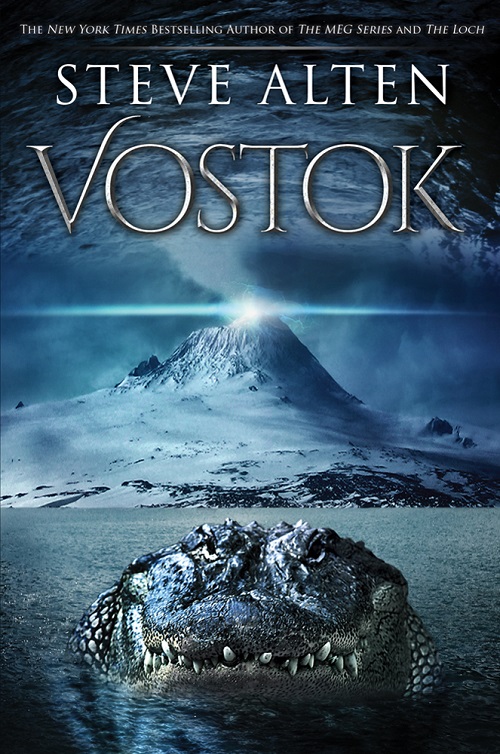
By Steve Alten
Rebel Press
February 17, 2015
ISBN-10: 1681020009
ISBN-13: 978-1681020006
What is it about the idea of UFOs that makes people nervous? While there have been many documented incidents over the years (with no other logical explanation), the government still won’t discuss it – and even pilots rarely report sightings for fear of losing their job. Steve Alten, New York Times bestselling author, isn’t afraid to talk about it. In fact, he weaves classified information on UFOs throughout his latest riveting book, Vostok.
In 2015, Obama Advisor John Podesta revealed that his biggest regret since leaving office was “keeping the UFO issue a secret.” Now, a shocking book by NY Times bestselling author Steve Alten, has blown the lid off those secrets. The author’s source – Steven M. Greer, M.D., the world’s foremost authority on Extraterrestrial Intelligence (ETI) and the same person who provided the extensive briefing to John Podesta on UFOs shortly after President Obama took office in 2009.
Dr. Greer, an emergency room physician who left his medical career to dedicate his life to disclosing the truth about UFOs, also briefed James Woolsey, President Clinton’s first CIA director, along with the heads of the Defense Intelligence Agency, the Head of Intelligence Joint Staff, members of the Senate Intelligence Committee, and a select number of Congressmen.
Best-selling author Steve Alten incorporated over thirty hours of private interviews with Dr. Greer into the storyline of Vostok (Rebel Press). Fans of thrillers will be drawn into the story – Vostok is a very real 15 million-year-old sub-glacial lake located beneath two-and-a-half miles of ice in East Antarctica. Incredibly, there is also a magnetic anomaly inside the lake that has baffled experts as to what it could be. Three scientists are selected to venture into this underwater realm in a submersible. What they discover will keep readers frantically turning pages…
But Vostok is much more. The thriller exposes a secret transnational Cabal which draws an estimated $80 billion Black Ops budget from US taxpayers with no congressional oversight. Made up of bankers, oil oligarchs, and members of the military industrial complex, the Cabal has used its influence to improperly seize over 5,100 US patents, many for new energy devices that would replace fossil fuels. As a result, clean free energy systems that would literally transform the planet (and the dominant U.S. macro-economy) have been black-shelved, their inventors threatened… and worse.
According to the author and his source, “presidents Clinton and Obama were both ‘warned off’ pursuing their UFO investigations; Clinton when CIA Director William Colby was murdered after he decided to cross the powers-that-be, and Obama on his trip to Norway to accept his Nobel Peace Prize when a Scaler weapon blast (an ET technology reverse-engineered decades ago) caused the Oslo night sky to light up with a blue spiral.” Vostok names names, along with the locations of super secret military bases where ARVs (Alien Reproduction Vehicles) are harbored and may one day be used in the ultimate false flag event.
Yes, truth is stranger…and far scarier…than fiction.
Supplemental- BBC’s The Lost World of Lake Vostok
Purchase VOSTOK E-book from Amazon
Prix d’Ami -Discovering Antique Pickers Barns
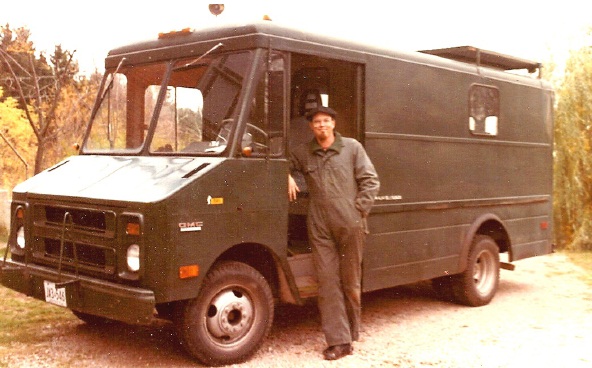
Discovering the Picker’s barns…after visiting Marcel Gosselin [last issue- http://tinyurl.com/7g4oxnk CP ] we went on to a large picker’s barn we had noticed on the way into Victoriaville which is where we met Jean (Kojak) Deshaies. As we arrived, the place was buzzing with activity as several pickers clamored for the attention of a completely bald man; pointing at, and demanding prices of items still being unloaded from his pickup truck. Not being used to this type of “pressure” buying we went inside and started to peruse the rows of furniture and items there.
Nothing was priced. We made note of several things of interest, and waited.
After several minutes the bald man came in and approached us introducing himself in a distinctive, low raspy voice as Kojak, and started simply “how can I help you?”. I was slightly taken aback by the intensity of his voice, abrupt manner, powerful short build, and the fact that he had absolutely no facial hair including eyebrows. He seemed….slightly hostile. We explained that we were dealers from Ontario, and that this was our first trip to Quebec. He immediately broke into a big smile and grabbed my hand and gave it a firm shake, and after introductions asked us what we found interesting. As we pointed out several pieces of early furniture, rugs, carvings, etc., he would offer a short description and then bark out the prices. As we said yes to an item, a young helper would grab the piece and haul it off to a place by the entrance where he started to make a pile. Kojak wrote the prices on a piece of scrap paper. He warmed with every item chosen and before long would sometimes follow the price quoted with a second lower price he called “prix d’ami” or “friend’s price”.
After awhile I noticed the large pile we had accumulated. I expressed my concern that I might not have enough cash for everything, but he said not to worry because a cheque would be fine. I was surprised at this sign of trust but he joked that he knew I would be back, and besides if the cheque was not good he would soon be at my door to collect, and I wouldn’t want that to happen.
He told us that he and a few of the other local dealers were just back from New York City where they had marched unannounced into the office of a downtown lawyer who had bought several items in the area with bad cheques, and had not answered their calls. “We just walked into his office, grabbed him by the scruff of the neck and told him we wanted our stuff back. We didn’t have to do more. He took us right to the warehouse. We were back home ten hours later.”If you had trouble covering a cheque it was fine as longs as you were up front about it, and made it right. No problem.”
Getting all of the stuff we bought into the truck was another thing but we managed. For the Silo, Phil Ross. Visit Phil’s blog at www.shadflyguy.com
The Commonwealth Opinion: Extreme Events Are Reversing Development Goals
Cyclones in the Caribbean and Pacific, devastating bushfires in Australia, recurrent floods and droughts in Asia and Africa, increasingly bring tragic loss of life to our nations and communities, inflicting physical and mental trauma on survivors, and causing irreparable damage to centuries old ways of life and undermining prospects for future prosperity and growth.
The current bushfires in Australia have been among the most distressing manifestations, leading the government to declare a state of emergency.
The total cost to the economy of the bushfires with which Australia is grappling seems likely to run into billions of dollars. Continuous drying of undergrowth creates optimal conditions for bushfires, leading to tragic loss of human lives and destruction of infrastructure. There is devastating impact on the precious biodiversity of flora and fauna, threatening drastically to affect the ecology of the region. Heightened levels of air pollution in the affected and adjoining regions are having adverse impacts on the respiratory health of scores of people.

Such extreme events are occurring with rising frequency, destroying the means of livelihood for millions people in Commonwealth countries, increasing vulnerability and reducing resilience. The Commonwealth collectively recognises that without well-planned and integrated national and international action, natural disasters and extreme events will continue to challenge the resilience of affected communities and smaller countries. The Commonwealth Secretariat is working alongside member nations to protect the environmental health of fragile and susceptible ecosystems, including through increased national preparedness for tackling natural disasters and mobilising resources.
For the arid and drought-prone member countries, which are highly vulnerable to dryness and bushfires, the Commonwealth provides support for governments to develop projects on sustainable and resilient landscape management, with the Commonwealth Climate Finance Access Hub (CCFAH) helping to unlock necessary financial resources. Similarly, by pooling information into a streamlined platform for better and more convenient access to information, the Commonwealth Disaster Risk Finance Portal currently in development will help countries find suitable sources of finance and support to deal with disasters.
On behalf of citizens of all Commonwealth countries, I express my heartfelt condolences to all families and communities who have lost loved ones in the tragic events of recent days. I commend the courage and commitment of firefighters, emergency service personnel and all others who are battling to rescue and protect people and property, wildlife and natural resources, or human infrastructure. In these testing times, the wider Commonwealth family stands in solidarity alongside the Government and people of Australia. For the Silo, by Patricia Scotland, Commonwealth Secretary-General
Featured photo- Luca Parmitano ESA Astronaut – Australia “Ash cloud” as viewed from the ISS International Space Station.
10 (Plus One) Brand Savvy Sports Celebs
Set For Library Borrowing- Graphic Classics Adds Acclaimed Works To Digital Editions
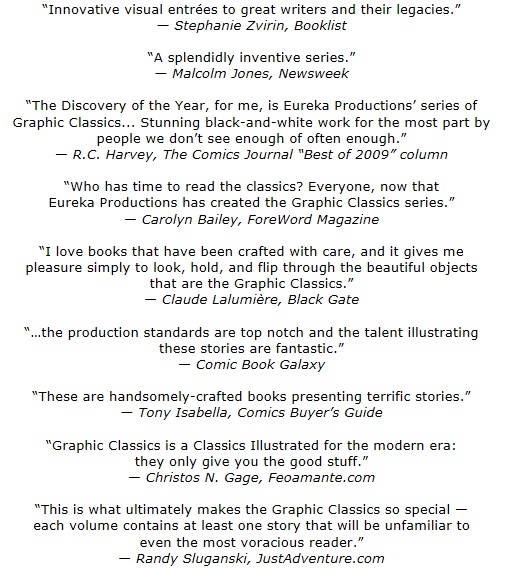
MOUNT HOREB, Wisconsin- Graphic Classics, the acclaimed series of comics adaptations of literary classics from publisher Eureka Productions, has had multiple titles included in the Diamond Distribution Core Curiculum List. Of the nearly 100 books on the list, 23 were from the Graphic Classics series, including VOLUME 2: ARTHUR CONAN DOYLE, VOLUME 4: H.P. LOVECRAFT, VOLUME 8: MARK TWAIN, VOLUME 18: LOUISA MAY ALCOTT, and VOLUME 22: AFRICAN-AMERICAN CLASSICS.
To help educators and librarians select materials to fit into their Common Core Standards curricula, Diamond Book Distributors have created the Diamond Graphic Novel Common Core List. Arranged by grade level, the Diamond Graphic Novel Common Core List offers 98 graphic novels from our publishers that will fit into a Common Core curriculum, along with resources including Library Classifications, Subject Headings, and Core Standards which apply to each book. The list is intended both as an aide to educators and librarians and to show that Diamond supports the Common Core Standards as an effective tool to prepare students for the challenges in college and the workforce.
Graphic Classics publisher Eureka Productions has also partnered with Overdrive and Comics Plus: Library Edition to make Graphic Classics digital editions available to libraries across North America and around the world. Among the library systems which have already started carrying digital editions of Graphic Classics are the Boston Public Library, Seattle Public Library, and the Dayton Metro Library.
Library users can borrow digital editions of Graphic Classics from their local library system for reading on smart phones, tablets, and computers. Digital editions are also available to consumers through the ComicsPlus and Ave Comics apps. Check with your local Library for Graphic Classics digital editions. CP
Canadian Money And How Select Banks Create It
|
How Apple Parallels My Life
When I think back to the 1980’s I have mostly fond memories. It was time of great fun and discovery for me personally. I had both Commodore and Apple computers and a hairstyle that is happy to remain in my past. I listened to cool groups like “Twisted Sister” and wouldn’t publicly admit that I enjoyed “Culture Club”. Being in high school, I was painfully shy and didn’t have a lot of success with girls.
Apple had a pretty similar experience if you think about it. They were a little shy and reserved, but very much loved by those who understood them. They didn’t go out much – choosing to stay in schools and in a very few select homes. They had their share of identity crisis’ in the early 80’s and tried to break free with a whole new persona called “Macintosh” in 1984.
They walked around confused between educational, business, and recreational use and staggered out of the fog towards the end of the decade.
The 1990’s brought about a new confidence and independence. I had started a business just at the end of the 80’s and took my experience to heart as I tried to find the right niche for me. I knew that computers was where I was meant to be and grew a business from nothing to exceptional sales in a short time.

I also saw the market hinge and my sales erode and I wasn’t quite able to move fast enough to recover my previous glory.
Apple saw their market share grow and decline in the 90’s as well. They knew that computers were where they were meant to be, but they couldn’t decide if they were the company to make them. They tried licensing out their operating system to others in a move that ultimately
muddied the market and left their loyal customers wondering just exactly where they were going next. Following graph courtesy of www.saypeople.com
The 2000’s became a year of maturity for me. More confident in the path I was following, I followed my dreams to open a computer museum and finally saw it through in 2005. I refocused my energies with my passion for video games to acquire the largest collection in Canada while at the same time educating others along the way.
I worked my way towards a global following for those that have shared my vision. Apple made the move from niche computer to dedicated
music device, to a more advanced smart phone in the 2000’s. They grew their loyal following in the computer market by making some radical
changes to their core operating system and integrating their new consumer devices flawlessly. They became the company they had always
dreamed they could be.
Today, I ’m following my dreams and am no longer the shy, awkward guy I was in high school. I ’m successful and I ’ve moved on from “Culture Club”. My life is very interesting because I like to keep one foot in the past to enjoy the good times, while putting another foot forward into the exciting future.
The best is yet to come, and I think the same is true for Apple. For the Silo, Syd Bolton. Check out www.pcmuseum.ca in Brantford,Ontario.
How We Set In Motion Coffee Global Business
If you are like me- someone who has drunk much more than one coffee in your life, you might be interested in pondering this question: Why do you think the multi-billion-dollar global coffee industry can be a losing business for the growers, whose hands till the land from where coffee starts?
In fact, if you drink 2 cups of coffee a day for one year, you’ll be spending more than the annual income of the coffee farmer in a developing country. To help present to fellow North American coffee drinkers this huge disparity between the farmer and the other key players across the coffee value chain, take a look at the infographic below.
Considering that North America is the biggest coffee consumer in the world, we can make a big dent by supporting the fair trade advocacy that ensures farmers get paid properly. Take a look at the infographic again. It describes how coffee is made from the farm to the mill, to the roasting plant and all the way to the consumer. Here are some of its highlights that show the bigness of this industry:
– 100 M people depend on coffee for livelihood; 25 M of which are farmers
– The U.S. spent 18 B for coffee yearly, equivalent to Bosnia’s GDP
– Coffee is the second most globally traded commodity after petroleum
For the Silo, Alex Hillsberg Web Journalist
Supplemental- How North Americans can help the #fairtrade program
http://financesonline.com/cherry-to-cup-the-economics-of-coffee/
http://financesonline.com/why-fairtrade-should-matter-to-you/
5 Most Famous Hotels In London England
Luxurious living, money and fame are things that spring to mind when thinking about hotels London. Many of them have stood the test of time and built a sterling reputation all over the world attracting many of the rich and famous.
Here we’ve compiled a list of the most renowned hotels in London.
Claridge’s, London
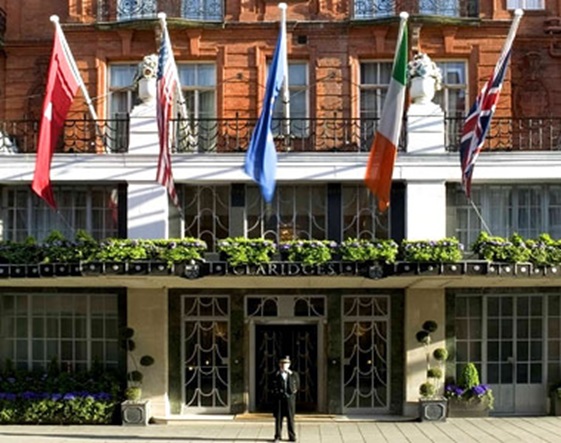
Opened in 1854 Claridges London is one of the oldest hotels in the city. Located in London’s infamous Mayfair, Its clientele are among the rich and famous with celebrities such as Brad Pitt and Mick Jagger no stranger to its doors. TV favorite Gordon Ramsay also had his own restaurant there for a time.
Its décor and facilities boast the best in fine dining and luxury living unrivalled in London and has over its long lifespan attracted royalty from all over the world. The hotel was also the feature of a 3 part documentary series for the BBC entitled ‘Inside Claridges’.
The Connaught, London
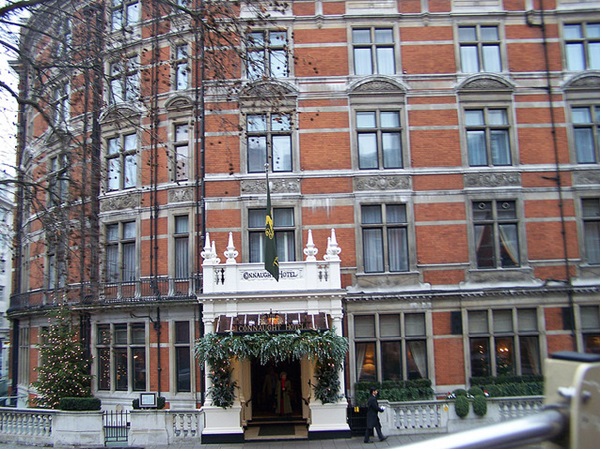
Residing in Mayfair, the Connaught first opened its doors in 1815. The hotel allows both traditional British and contemporary design to co-exist by maintaining its Victorian exterior and completing a 70 million pound internal refurbishment by lead designer Guy Oliver.
This hotel and its staff have won many prestigious awards over its lifespan including its spa winning first prize in the spa category in the Hotel & Lodge Awards 2012 and it’s very own bartender Agostino Perrone winning International Bartender of the Year 2010.
Brown’s, London
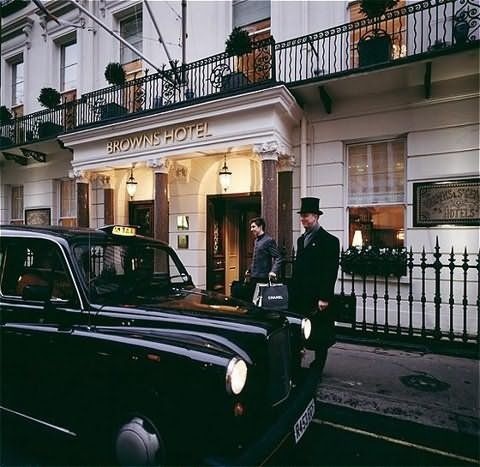
One of London’s most established hotels is Browns. Opening its doors in 1837, it celebrated its 175th anniversary in 2012 and has consistently attracted guests of wealth and fame, most notably President Theodore Roosevelt and Oscar Wilde.
Not only does this Mayfair hotel boast a stunning Victorian 5 star setting it is also within walking distance to some of London’s busiest attractions such as Hyde Park, Bond Street, Regent Street and some of its most famous landmarks.
The Great Northern Hotel
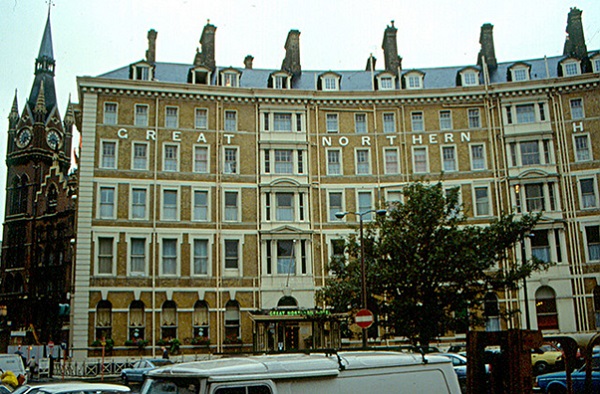
Dubbed as ‘The World’s First Great Railway Hotel’ , The Great Northern is a stunning boutique hotel with rail connections to Europe and beyond via the Eurostar. It stands tall above the areas surrounding buildings and it’s a significant point of interest for all arriving into Kings Cross St Pancras station.
Designed by infamous architect Lewis Cubitt stood as the centrepiece for the steam revolution.
The Berkeley

The Berkeley is a five star deluxe hotel, located in Knightsbridge, London. Its history spans well over a 100 years and has even moved buildings. The infamous hotel began its life at Berkeley Street and served as accommodation for mail coach drivers travelling to the West Country.
In 1972 it moved to its current location, incorporating an entirely new refurbishment to include London’s only rooftop swimming pool. Aside from its unique facilities and décor the Berkleley has attracted numerous Michelin star chefs including Pierre Koffmann and more recently Gordon Ramsay and his Boxwood Café. For the Silo, Susan Varano.
Model Building Led To Canadian Titanic Society Founding

Norm Lewis was just twelve years old in 1958, a student at the old South Public School, when he saw the film A Night To Remember, a straight forward rendering of the Titanic disaster based on the book by Walter Lord. The film was a pivotal experience for Norm, and the beginning of a life-long fascination with this most infamous nautical event.
In 1993 Norm attended a Boston conference of The Titanic Historical Society, meeting enthusiasts from all over the world. He began polling Canadian delegates on the idea of starting their own group and got an overwhelming response. In 1998, this former locksmith and transport driver became the President, Founder and CEO of the Canadian group. Radio stations from Calgary, Kitchener and Toronto all called for an interview, and within a week The Canadian Titanic Society was receiving more letters than Norm could carry.
Norm has collected a great deal of Titanic memorabilia over the years, including 110 underwater photographs taken by Ralph White, the Society’s official “Explorer in Residence” and 2nd Vice-President, who at the time of his death in 2008 had made more dives to the wreck than anyone else in the world. A pioneer in deep sea photography and cinematography, Ralph was the expedition leader for James Cameron’s 1997 epic movie. And you know the name of that one.
With the help of some volunteers, Norm also researched Norfolk County connections to the disaster, finding Titanic crew members, survivors and passengers from the rescue ship Carpathia living like Norm, in Simcoe Ontario though all have now passed away.
But perhaps most impressive, Norm Lewis is the sole architect of a twenty-foot scale model of R.M.S Titanic that has appeared in parades and exhibitions all over the province. Detailed, historically accurate, and made almost entirely out of wood, the model is the only one of its kind. It has working propellers, smoking funnels and a truly impressive digital recording of the actual titanic whistles. It took him eight years. You might call that obsession, but if you think of a twelve year old boy, rapt in fascination at one of the most spectacular and terrible stories in nautical history, you might just call it a labor of love. For the Silo, Alan Gibson.
VisaNet Connects Two And A Half Billion Credit Cards
One of the many ways the Internet is driving the global economy is through digital payments, making it easy for consumers to buy just about anything from anywhere. VisaNet is the largest payment processing network in the world, connecting 2.4 billion credit cards at 36 million locations across 200 countries.
Chasing Ontario’s Tornados
Part One
“I have seen many storms in my life. Most storms have caught me by surprise, so I had to learn very quickly to look further and understand that I am not capable of controlling the weather, to exercise the art of patience and to respect the fury of nature”
My name is Spencer Sills, and I am a storm chaser, some of you may remember a few years back reading about my good friend David Chapman and myself in this very newspaper and our journeys on the road to capture Nature’s fury through our lenses. Not much has changed since then, we are both still on the hunt for the elusive supercell and what fury may come with it.
In 2014 my overall goal to capture a tornado in Ontario was once again successful, on July 7th I teamed with Scott Burlovich of Restless Skies photography and his chase partner Harry for the day and we set out to capture some pulse storms that were flaring up in the afternoon, most of these cells were just rain makers but on the way back to my home I had noticed a wall cloud that was lit up by the sun, we pulled off to the side of the road directly South of Norwich and briefly documented a EF0 tornado in a farmers field before it lifted causing no damage since it was in a dry field. This was my only tornado of the year, in a busy season. I did however get to document several gorgeous storm cells throughout the year, including several beautiful stacked shelf clouds and a great Wall cloud early in the season that brought golf ball sized hail to the area.
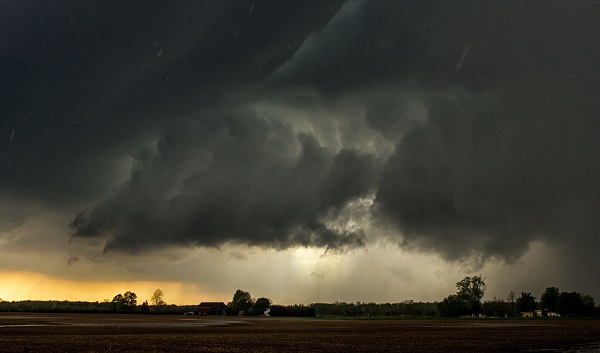
In 2015 I hope to achieve a few goals, one of which is to capture yet another tornado in this province, hopefully just like 2014 in an open field away from any properties. I also have set my sights on some goals with lightning and capturing it in a different perspective, I can’t go into much detail but it will be a stunning sight if I can achieve it. As far as how I believe the season will go, I do believe it will be a slow start, April and May will bring the return of storms, but I don’t expect anything too severe until June and July once the humidity and warmth really have a chance to build in. I do however once again stress to leave chasing to the pros, if you’re interested in storm spotting, please look into Canwarn, the more spotters in the province the quicker warnings can be issued thanks to verified ground reports.
I will be working alongside another photographer and storm spotter this year, Scott Burlovich of Restless Skies, please feel free to check out his amazing work at restless-skies.com and give him a follow on twitter @restless_skies , you can also follow my journey for the year at Lightningfastphotography.com or on twitter @spencersills. I also want to send my best wishes to David Chapman for a great 2015, and as always look forward to meeting him in the field under the Meso, stay tuned for more updates and stay sky aware this summer!
Part Two
Another winter has come and gone, although perhaps slower than a lot of us would like. At least this means that the storm season is once again upon us in Ontario. As usual, Brian Chapman and I, a father and son chase team, will be back out on the roads looking for the best images of lightning and searching for Ontario’s tornadic super cells.
We will also be in close communication with our good friends and fellow chasers, Spencer Sills and Scott Burlovich, as we tend to share a lot of information about the biggest potential storms before we go chasing. You’ll notice when you look through their photography collections that they are a couple of the best for chasing down the biggest storms in our province.
You might be curious on what we do when it comes to chasing the actual storm. Brian’s job is to be the driver. This is his first priority. Once we are parked and in a safe but photographic position for the storm, he is our main videographer. As for myself, I choose where I think the biggest storm will form from looking at weather models that meteorologists use as well as talking to fellow storm chasers in the area. I am also the main photographer. I do some video work and navigate us to the most photogenic side of the storm. This is usually right next to the most dangerous part of the storm but still in the safest position possible.
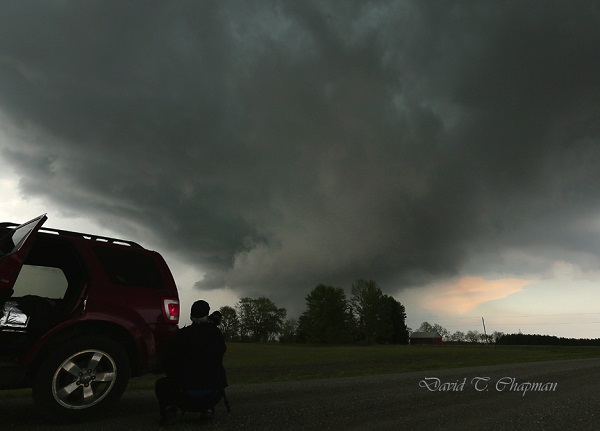
In the past 2 years, our team has seen and recorded a number of funnel clouds, 2 confirmed tornadoes and 4 waterspouts. One of the tornadoes was near Arthur, Ontario on August 7, 2013 and the landspout tornado was near Listowel, Ontario on May 14th 2014. The Arthur tornado was a really great one to document. It lasted for close to 15 minutes and we were able to see it from start to finish. The best part about it was the fact that no one was injured and it caused very little damage. Those are the kinds of tornadoes we love to see because they allow you to enjoy the pure power and beauty that they possess but without injuries or major destruction.
Another thing that was interesting with the tornado that hit near Arthur was the fact that it tried to form a second tornado at the same time the first one was on the ground. If that funnel had reached the ground, it would have been called a satellite tornado. They are typically smaller and weaker but not always. In Pilger, Nebraska in 2014, two EF-4’s were on the ground at the same time. Sadly they hit a town, killing 5 people and injuring 19. Those are the days I dread as a chaser and hope I never see first hand. As for the second funnel near Arthur, it didn’t quite have the energy to make it the rest of the way to the ground. This probably wasn’t such a bad thing with so many people focusing on the main, larger tornado just to its north.
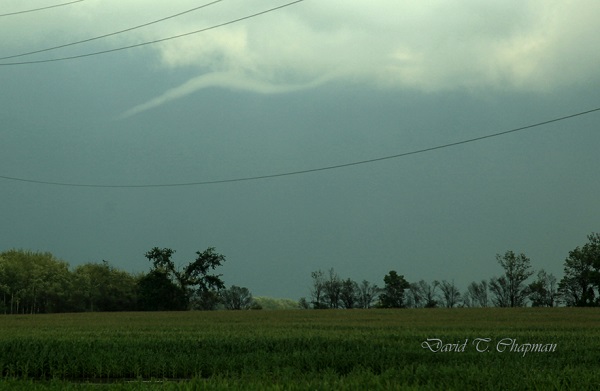
Fortunately, a lot of Ontario’s tornadoes hit open areas that cause little to no damage. There have been some exceptions, as the tornadoes that hit both Durham, Ontario on August 20, 2009 and Goderich on August 21, 2011 showed, both killing one person in each of them. That is why many storm chasers as well as dedicated weather enthusiasts in our province have a direct line to Environment Canada that allows us to contact them when we see threatening weather approaching the area we are in. It can help Environment Canada confirm what they are seeing on radar so that they can issue the proper watches and warnings accordingly. Refer to Spencer Sills’ Part One above for more details on how you can become a spotter. Lightning will also be a big focus for our team this year. We continue to work to get lightning photos as close as possible in order to capture the positive leaders that come up to meet the main negative current coming down from the cloud. The leaders can come from the ground, hydro poles, houses and even people.
Although this may be risky and dangerous, we have worked out ways to minimize the risk to us. We stay in the car when lightning is close with the windows up. We also won’t park under a tree, not so much from the fear of a direct lightning strike but in case lightning hits and splits the tree causing it to fall on the vehicle. I remember seeing one like that when I was young and it has had an everlasting impression on me. One of the first big wind storms I chased along Lake Erie on November 1, 2013 knocked down a tree onto a woman‘s car and unfortunately she was in it and was killed. So debris is always a concern and something to be very aware of when it comes to storm chasing.
You can follow our storm chasing throughout the year on our social media pages. https://twitter.com/DTChapmanPics https://www.facebook.com/pages/David-T-Chapman/173134962767601?fref=ts https://twitter.com/WeatherHunters
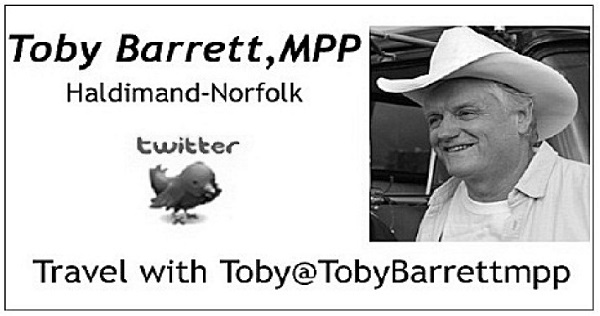
The Consolidation Of North American Food
Adam Jacob sent in this tell-all graphic that is pretty shocking. If these statistics are true then ‘it’s clear the small food producer is an endangered species. Unless of course, they start supplying the big chain corporate grocery store chains. And that will likely spell the end of family farm gate-retail…and that will spell the end of the family farm. It is so important to support local farm to table initiatives and preserve food that is not only grown for profit, but grown for quality and healthy consumption.
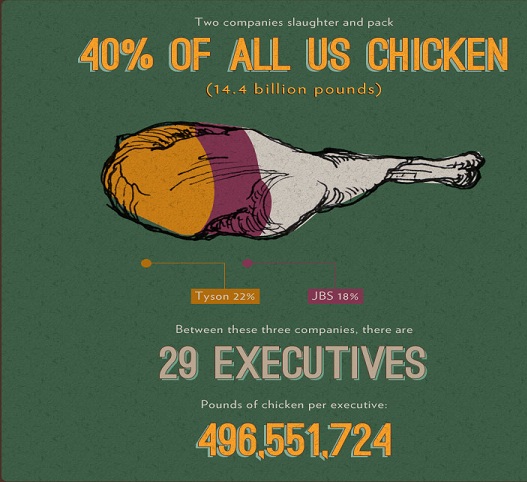
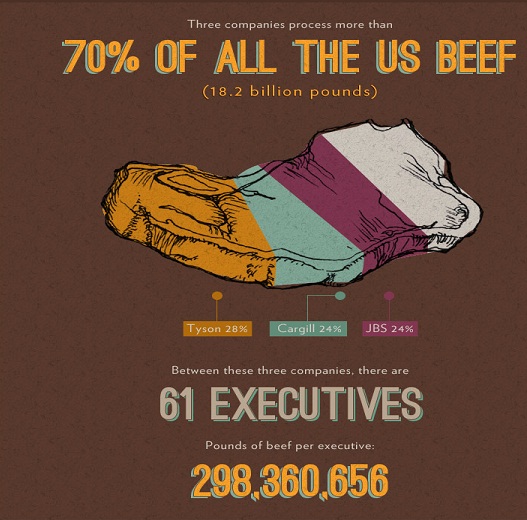
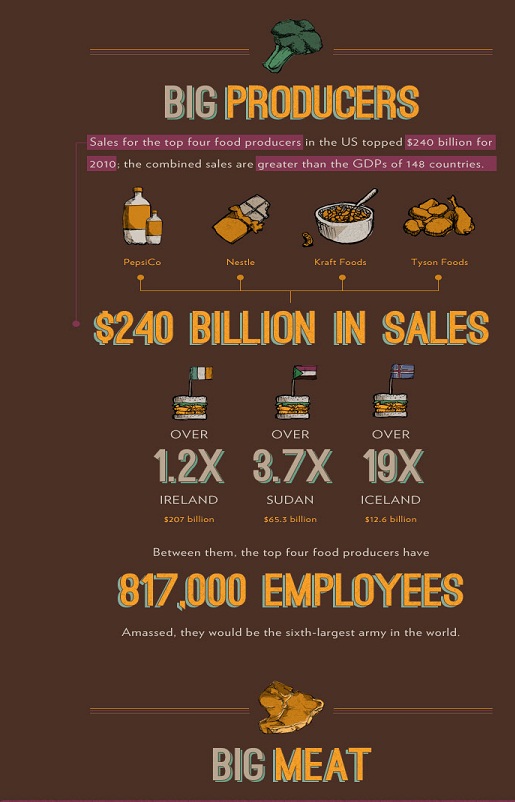

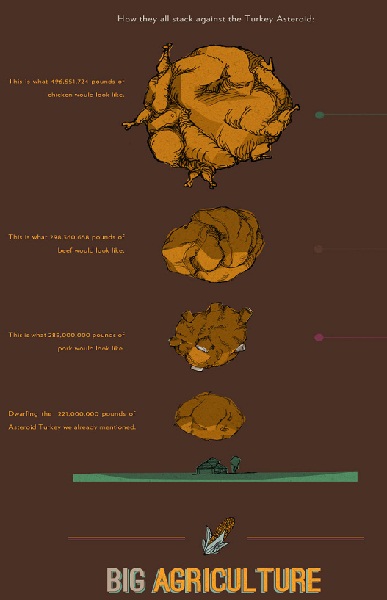

 To learn more about the consolidation of (North) American food and the implications for Ontarians, visit Silo Direct Link to Frugaldad.com
To learn more about the consolidation of (North) American food and the implications for Ontarians, visit Silo Direct Link to Frugaldad.com
How To Present New Ideas To Your Intimidating Boss
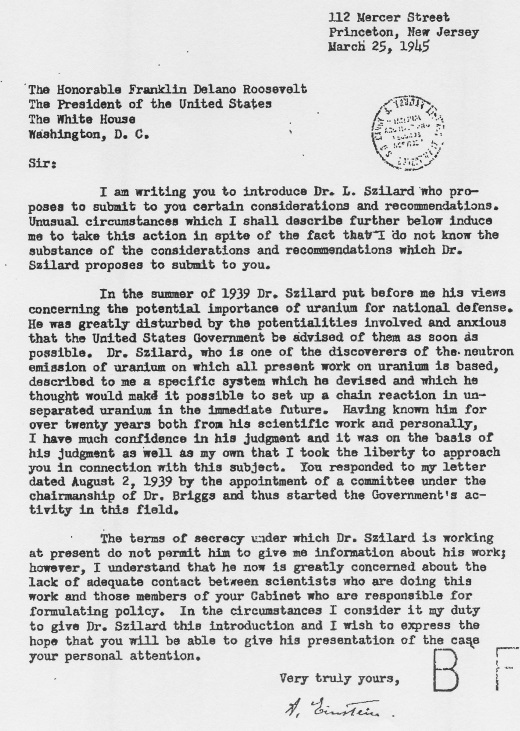
Everyone says they want innovation in their organization, but when an ambitious employee offers it to a Boss or CEO, for example, the idea is often shot down, says Neal Thornberry, Ph.D., faculty director for innovation initiatives at the Naval Postgraduate School in California.
“Senior leaders often miss the value-creating potential of a new concept because they either don’t take the time to really listen and delve into it, or the innovating employee presents it in the wrong way,” says Thornberry, who recently published “Innovation Judo,” (www.NealThornberry.com), based on his years of experience teaching innovation at Babson College and advising an array of corporate clients, from the Ford Co. and IBM to Cisco Systems.

Thornberry outlines a template for innovation that works:
1 Intention: Once the “why” is answered, leaders have the beginnings of a legitimate roadmap to innovation’s fruition. This is no small task and requires some soul searching.
“I once worked with an executive committee, and I got six different ideas for what ‘innovation’ meant,” he says. “One wanted new products, another focused on creative cost-cutting, and the president wanted a more innovative culture. The group needed to agree on their intent before anything else.”
2 Infrastructure: This is where you designate who is responsible for what. It’s tough, because the average employee will not risk new responsibility and potential risk without incentive. Some companies create units specifically focused on innovation, while others try to change the company culture in order to foster innovation throughout. “Creating a culture takes too long,” Thornberry says. “Don’t wait for that.”
3 Investigation: What do you know about the problem? IDEO may be the world’s premier organization for investigating innovative solutions. Suffice to say that the organization doesn’t skimp on collecting and analyzing data. At this point, data collection is crucial, whereas brainstorming often proves to be a waste of time if the participants come in with the same ideas, knowledge and opinions that they had last week with no new learning in their pockets.
4 Ideation: The fourth step is also the most fun and, unfortunately, is the part many companies leap to. This is dangerous because you may uncover many exciting and good ideas, but if the right context and focus aren’t provided up front, and team members cannot get on the same page, then a company is wasting its time. That is why intent must be the first step for any company seeking to increase innovation. Innovation should be viewed as a set of tools or processes, and not a destination.
If you’re gonna ‘demo’ your idea you better have practiced and perfected your routine before showing your boss-
5 Identification: Here’s where the rubber meets the road on innovation. Whereas the previous step was creative, now logic and subtraction must be applied to focus on a result. Again, ideas are great, but they must be grounded in reality. An entrepreneurial attitude is required here, one that enables the winnowing of ideas, leaving only those with real value-creating potential.
“Innovation without the entrepreneurial mindset is fun but folly,” Thornberry notes.
6 Infection: Does anyone care about what you’ve come up with? Will excitement spread during this infection phase? Now is the time to find out. Pilot testing, experimentation and speaking directly with potential customers begin to give you an idea of how innovative and valuable an idea is. This phase is part selling, part research and part science. If people can’t feel, touch or experience your new idea in part or whole, they probably won’t get it. This is where the innovator has a chance to reshape their idea into an opportunity, mitigate risk, assess resistance and build allies for their endeavor.
7 Implementation/Integration: While many talk about this final phase, they often fail to address the integration part. Implementation refers to tactics that are employed in order to put an idea into practice. This is actually a perilous phase because, in order for implementation to be successful, the idea must first be successfully integrated with other activities in the business and aligned with strategy. An innovation, despite its support from the top, can still fail if a department cannot work with it.
For the Silo, Neil Thornberry.
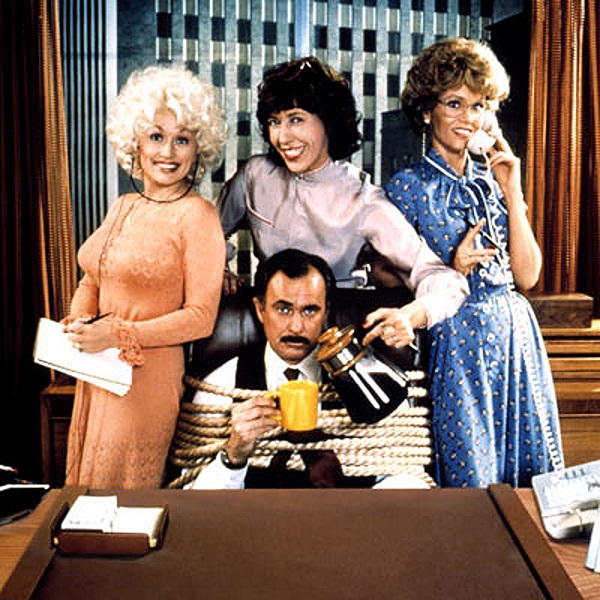
Neal Thornberry, Ph.D., is the founder and CEO of IMSTRAT, LLC a consulting firm that specializes in helping private and public sector organizations develop innovation strategies. A respected thought leader in innovation, Thornberry is a highly sought-after international speaker and consultant. He also serves as the faculty director for innovation initiatives at the Center for Executive Education at the Naval Postgraduate School in Monterey, Calif. Thornberry, author of “InnovationJudo:Disarming Roadblocks & Blockheads on the Path to Creativity”, holds a doctorate in organizational psychology and specializes in innovation, corporate entrepreneurship, leadership and organizational transformation.
Artificial Stimulants In Energy Drinks Hurt Kids
Why Your Kid Shouldn’t Be Guzzling ‘Energy’ Drinks
Vitamins & Minerals are Safer and More Effective than
Artificial Stimulants, Says Food Science Expert
Anxiety, hypertension, elevated heart rates, interrupted sleep patterns and headaches are just some of the side effects commonly associated with energy drinks, and those problems are more pronounced in children, according to a recent University of Miami study.
But that’s just the tip of the iceberg. These drinks have also been linked to heart palpitations, strokes and sudden death.
The term “energy” drink is an unfortunate misnomer, says food science expert Budge Collinson. They don’t give your body energy; they stimulate you with brief jolts of caffeine and unregulated herbal stimulants, he says.
“Soccer moms and dads buy these ‘stimulant’ drinks for their kids before matches because both kids and parents want that competitive advantage,” says Collinson, founder of Infusion Sciences and creator of Youth Infusion, (www.drinkyouthinfusion.com), an effervescent, natural multivitamin beverage that helps people maintain consistent and healthy higher energy levels.
“For a few moments, you’ll get that spike, but it’s a short-term experience with a heavy long-term toll.”
So, what are some ways kids can get a healthy energy boost? Collinson offers the following tips.
• Go for a speedy bike ride together, take a brisk walk or hold foot-races in the yard. Numerous studies demonstrate the power of vigorous exercise in boosting energy. Exercise pumps more oxygen – pure, healthy fuel — into the bloodstream and to the brain and muscles for a short-term energy boost. Exercising regularly will increase lung capacity, so the body will gets more oxygen on a sustained level for the long term. Exercise also releases endorphins, the body’s natural feel-good chemical, which makes us feel happy. And happy people are energized people.
• Seek nutrition from a variety of sources. As humans, we need more than 40 different vitamins and minerals to keep our bodies functioning optimally. Since there is no single food that contains them all, it is important for children and adults to eat a variety, including as many different vegetables and fruits as possible. Adding a daily multivitamin supplement with essentials such as CoQ10, arginine, theanine, resveratrol and magnesium can help ensure bodies young and old are running at top speed.
• Drink plenty of water – the natural energy drink. Even mild dehydration can leave children (and adults) feeling listless, so encourage children to make a habit of drinking plenty of water. Kids need more water than adults because they expend more energy, and they may not recognize when they’re slightly thirsty. Parents, too, often don’t recognize the signs of dehydration; a national survey of more than 800 parents of kids ages of one month to 10 years found that more than half feel they don’t know enough about dehydration. A quick, light pinch of the skin on the child’s hand or arm is an easy check. If the skin is slow to resume a smooth appearance, the child is likely at least mildly dehydrated.
About Budge Collinson
Budge Collinson was the beneficiary of his mother’s natural health formula as a sick baby, which led to a deep interest in health and wellness at a young age. After years of research and seeing the growing demand for natural products with clinical support, he founded Infusion Sciences, www.infusionsciences.com. Collinson earned a bachelor’s degree in food and resource economics from the University of Florida and certification from the National Academy of Sports Medicine. Recently, he became a member of the American Academy of Anti-Aging Medicine and consistently attends the Natural Products Expo, where he learns the latest science and news about nutritious ingredients. Collinson is also a go-to source for media outlets across the country for healthy lifestyle and food source discussions.






